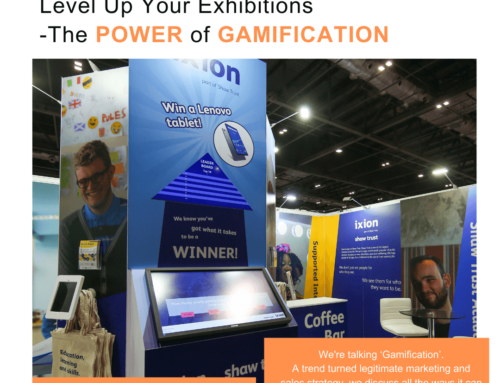Before your next exhibition, follow these steps to ensure you know what success looks like…
Setting Budgets
Setting a budget for your exhibition will help you keep control of costs, ensuring the event is as profitable as possible. It will also assist you in setting targets and show you what you can afford to do on the stand.
Use a basic project planner to help you list out things you need to produce your event. Take your budget and start allocating it to your list items.
Consider investing in a reconfigurable system that can be re-used at multiple events. It will give you a better return on investment (ROI) than buying several cheaper systems that can only be used in one layout and which won’t last as long.
Typical exhibition items that you should budget for are:
- Stand space
- Exhibition stand and display equipment
- Storage and transport
- Furniture hire
- Lighting
- Hotels
- Travel
- Subsistence
- Invites
- Brochure design and printing
- Incentives
- Promotional items
- Uniforms
- People (your staff are not free – what will it cost for them to be out of the office for the duration of the event?)
The next crucial step is to set objectives and targets to ensure your team know why they are there, what the activities will be, what they need to achieve and to provide context to measure your success by.
Setting objectives and targets

Goal setting concept diagram on white board
The objective should be specific and measurable so that your targets can be realistic and beneficial to the business. Read this to help you set SMART objectives.
For example, if your objective is to sell, you need to know what your sales conversion rate is likely to be.
Typically most sales don’t happen at the event but instead result from a solid follow up strategy. Leads are typically ranked depending on the customer’s urgency and capacity to buy. For timely follow up, it’s important for your sales team to establish purchase intent and a specific time frame for doing so. Each lead needs to have a monetary value attached to them, so that you can calculate the potential profit.
During the review process you can then know what the return on investment was for your exhibition and how it compares to other sales streams?
Measuring success: Return on investment.

Metal spheres on a seesaw with three black pebbles over white background. Finance concept image for illustration of ROI or investment.
Return on investment(ROI) is there as a performance measure used to evaluate the efficiency of an investment. The investment being the exhibition and all the costs involved from your budget list.
The formula looks like this:
Return On Investment (%)= Net profit / Investment × 100
The results of exhibitions can be ‘slow burners’ rather than ‘quick wins’. Therefore measuring all aspects of it may not be something you can do immediately afterwards. It is important to re-evaluate it over a period of time as leads are followed up and sales are made (sometimes months after the event).
Other reasons to exhibit may be:
- to collect data
- market research
- PR generation
- brand awareness
- product launch
These objectives will also need to be specific and measurable and should have related targets, although monetary value may not be relevant for all of them.
Don’t hurry the review and evaluation process or you may not accumulate a true picture if what the exhibition gave to your business.







